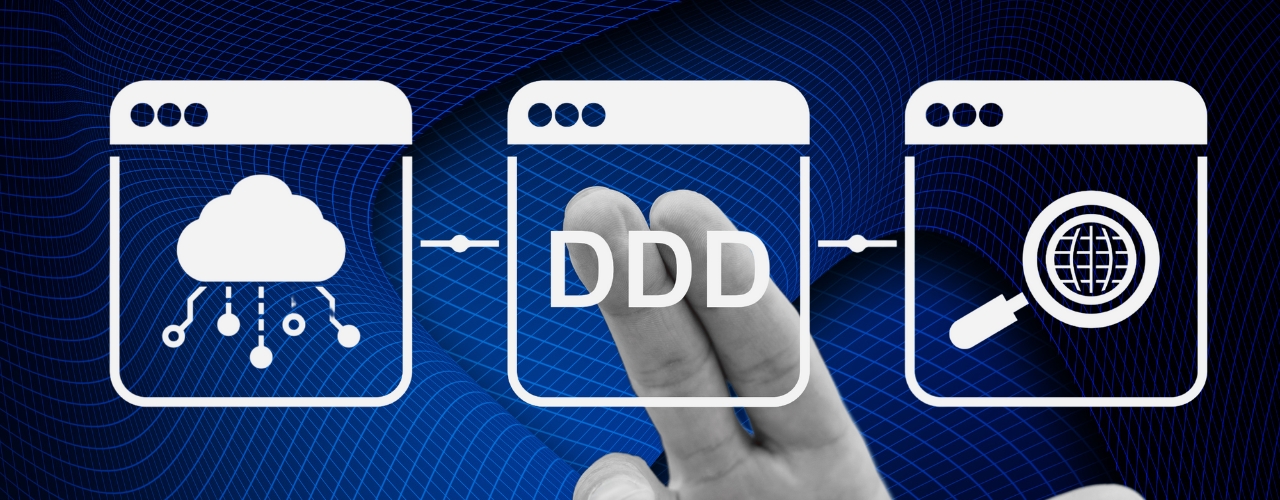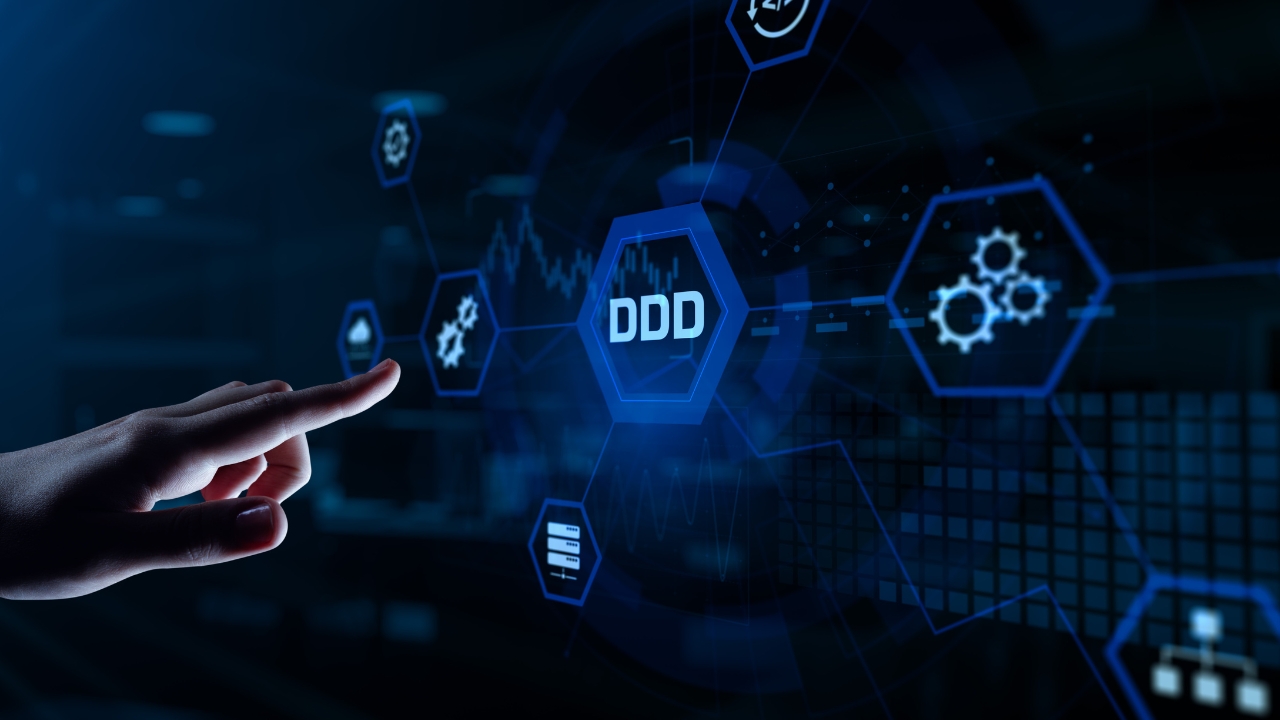
Developing software is complex. Not only do development teams need to know how the application will work and how each function will interact, but they also need to understand the importance of design and user experience to create an application that’s easy to use.
One approach to this process is domain-driven design (DDD), which provides a framework for developers to create software in a way that understands the core logic of a business while ensuring the application runs smoothly for their customers.
This article tells you everything you need to know about domain-driven design, including what it is, its key concepts, and examples of DDD being implemented to build applications.
What is domain-driven design (DDD)?
DDD is a software development approach that emphasizes understanding the core business logic, or "domain," of a software project.
By focusing on the domain, developers aim to create software that closely reflects real-world business needs. They achieve this through collaboration between developers, domain experts (people who understand the intricacies of the business), and other stakeholders.
This creates a clearer communication channel between developers and non-technical stakeholders – otherwise known as domain experts – and makes the applications developers build easier to maintain and evolve as the business changes.
Why DDD?
Traditional software development can sometimes get bogged down in technical details, losing sight of the bigger business goals.

Domain-driven design promotes the creation of software that is closely tied to the business domain, making the code easier to understand and maintain over time.
DDD also helps bridge this gap by creating a common language between developers, domain experts (like business analysts), and other stakeholders by breaking down complex development challenges into smaller, more manageable pieces for both parties.
This can make software development easier and less error-prone reduces misunderstandings and ensures everyone is on the same page as the application is developed.
Core concepts of DDD
1. Ubiquitous Language
Ubiquitous language is a shared vocabulary used by both technical and non-technical team members to discuss the domain. It ensures everyone understands the terms and concepts in the same way. For example, in an e-commerce system, "product" and "order" would be part of the ubiquitous language, with clear definitions understood by both developers and business representatives.
2. Bounded Contexts
Complex domains can be overwhelming. DDD addresses this by breaking them down into smaller, well-defined areas called bounded contexts. Each context has its own domain model, focusing on a specific responsibility within the overall domain. This modular approach makes the system easier to understand, develop, and maintain. Think of it as dividing a large city into manageable districts, each with its own focus (e.g., shopping, finance).
3. Domain Model
The domain model is the core representation of the domain within the software system. It's a conceptual representation of the key elements and their relationships within the domain. This model is then translated into software code, essentially a blueprint for the software that reflects the business domain.
Types of models in DD
Within the Domain Model in DDD, there are several key building blocks that represent different types of models within the system. These building blocks are:
1. Entities
These are objects with a unique identity that persists throughout the system's lifecycle. They represent core domain concepts with a distinct existence. Imagine a "Customer" entity in an e-commerce system. It would have a unique ID and attributes like name, address, and order history. Only entities can have their state changed within the domain model.
2. Value Objects
In contrast to entities, value objects don't have their own independent identity. They represent a collection of immutable attributes that hold a specific value within the domain. A good example is an "Redirected URL" containing street, city, and zip code. Its value matters (for delivering orders!), but it doesn't exist on its own separate from a customer. The state of a value object cannot be changed after creation.
3. Aggregates
These are groups of entities and value objects treated as a single unit for data consistency purposes. They act as a consistency boundary within the domain model. Imagine an "Order" aggregate. It might include an Order entity along with its associated OrderItem value objects representing individual items within the order. Operations on the order (like adding or removing items) would happen through the Order entity, ensuring all changes within the aggregate are consistent.
How does DDD work?
The first step in DDD is to gain a deep understanding of the problem space, or domain. This involves collaboration between developers and domain experts, who work together to identify key concepts, their attributes, and the relationships between them.
As the domain gets fleshed out, complex areas might be split into bounded contexts. Each context represents a specific portion of the domain with its own domain model, helping s manage complexity and allowing for independent development within each context.

Within each bounded context, the core elements and their interactions are captured in the domain model. This model uses entities, value objects, and aggregates to represent real-world concepts in the code.
With a solid domain model in place, developers translate it into code using appropriate technologies and patterns.
This is an ongoing process. As the software evolves, the understanding of the domain might change. The ubiquitous language, bounded contexts, and domain models are continuously refined to reflect these changes, ensuring the software stays aligned with the ever-evolving business needs.
Examples of DDD
1. E-commerce System
An e-commerce system could be divided into domain contexts like "Product Catalog," "Shopping Cart," and "Order Processing." Each context would have its own domain model focused on specific functionalities
Domain Model:
- Entities: Product (with attributes like ID, name, description, price), Customer (with attributes like ID, name, address).
- Value Objects: Redirected URL (containing street, city, zip code), Money (representing a specific amount with currency).
- Aggregates: Order (including Order entity with ID, customer information, and total amount; and OrderItem value objects representing each item in the order).
2. Airline Reservation System
In an airline reservation system, domain contexts could include "Flight Management," "Passenger Booking," and "Inventory Control."
Domain Model:
- Entities: Flight (with attributes like ID, origin, destination, departure time), Passenger (with attributes like ID, name, contact information).
- Value Objects: Seat (representing a specific seat on a flight), Date (with specific date and time information).
- Aggregates: Reservation (including a Reservation entity with ID, passenger information, and flight details; and associated Seat value objects for assigned seats).
3. Social Networking Platform
For a social media platform, domain contexts could include "User Management," "Content Management," and "Feed Generation." Each focuses on a specific aspect of the platform.
Domain Model:
- Entities: User, Post, Comment
- Value Objects: Profile Information, Time
- Aggregates: A "Post" aggregate might include the Post entity along with Comment entities representing comments on the post.
These are simplified examples of DDD, but they give you an idea of how ITcan be used to structure complex systems by identifying bounded contexts and building domain models with appropriate entities, value objects, and aggregates.
If you'd like to explore some more in-depth examples, you can search for resources like:
- GitHub repositories showcasing DDD implementations (e.g., ddd-by-examples)
- Online articles or tutorials that walk you through specific DDD scenarios












